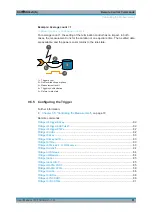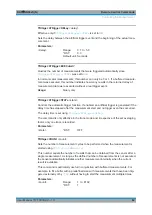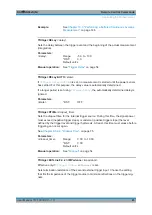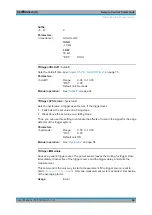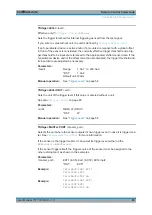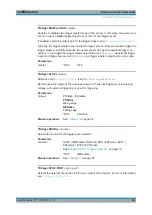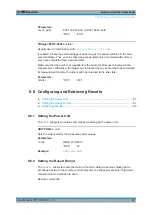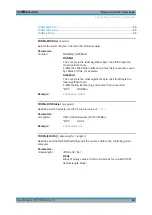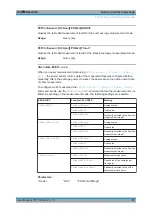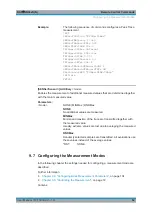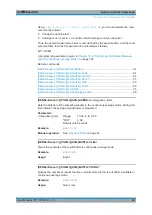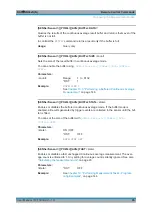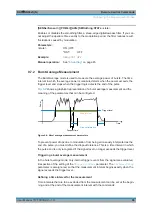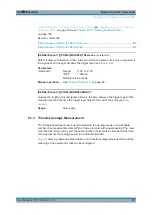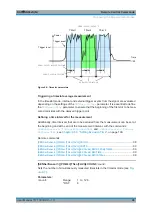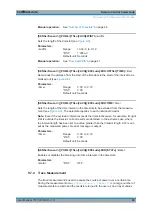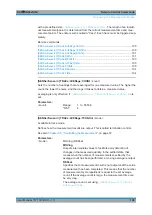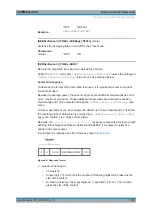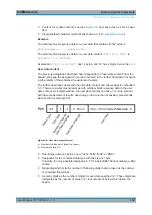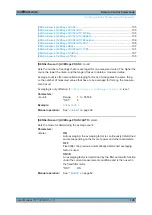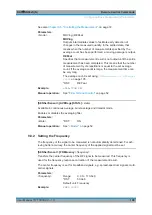
Remote Control Commands
R&S
®
NRPxxS(N)
93
User Manual 1177.5079.02 ─ 10
Continuous Average Measurement
.........................................................................93
.................................................................................. 96
............................................................................. 97
................................................................................................ 99
9.7.1
Continuous Average Measurement
The Continuous Average mode measures the signal average power asynchronously
within definable time intervals (sampling windows). The aperture (width of the sampling
windows) can be defined.
Reducing noise and zero offset
The smoothing filter can reduce result fluctuations caused by modulation. But activat-
ing it increases the inherent noise of the sensor by approx. 20
%., so do not activate if
it unless required.
Configuring continuous average measurements of modulated signals
When measuring modulated signals in continuous average mode, the measurement
can show fluctuation due to the modulation. If that is the case, adapt the size of the
sampling window exactly to the modulation period to get an optimally stable display. If
the modulation period varies or is not precisely known, you can also activate the
smoothing function.
With smoothing activated, the selected sampling window has to be 5 to 9 times larger
than the modulation period so that the fluctuations caused by modulation are suffi-
ciently reduced. The sampling values are subjected to weighting (raised-von-Hann win-
dow), which corresponds to video filtering.
If you deactivate the smoothing filter, 300 to 3000 periods are required to obtain the
same effect. The sampling values are considered equivalent and are averaged in a
sampling window, which yields an integrating behavior of the measuring instrument. To
obtain optimum suppression of variations in the result, exactly adapt the modulation
period to the size of the sampling window. Otherwise, the modulation can have a con-
siderable influence, even if the sampling window is much larger than the modulation
period.
Calculating the measurement time
Normally, the measurement time is calculated as follows:
MT = 2 * AC * APER + (2 * AC - 1) * 100
μ
s
with:
MT: overall measurement time
AC: average count
APER: aperture time
100
μ
s is the time for switching the chopper phase.
Configuring the Measurement Modes



